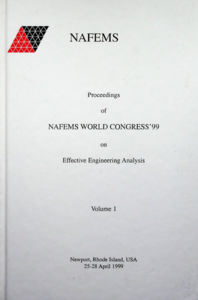
This paper on "FE Modelling of Cartilage on Bone" was presented at the NAFEMS World Congress on Effective Engineering Analysis - 25-28 April 1999, Newport, Rhode Island, USA.
Summary
Loads applied to diarthrodial joints are transmitted through the articular cartilage into the bone. The importance of the synergy between the two materials is increasingly recognised yet little is understood of the nature of the stress distributions that are developed within them. A model of an idealised joint, considered as a hemispherical indentor contacting a plane-ended cylinder, has been developed in order to remove complicating geometrical factors. It is defined first to have uniform material properties, approximating to those of cancellous bone, and refined by comparison with the analytical solution for a Hertzian indentor. A softer surface layer is then introduced with properties appropriate to articular cartilage under slow rates of loading. As expected, this layer attenuates the peak direct stresses from those of the uniform indentor and spreads them over a larger area. However, a steep shear stress gradient is developed at the interface between the two layers and there are discontinuities in principal stresses. Fatigue at this interface could then be a possible cause of horizontal clefts, which are occasionally found in the deep and calcified layers of articular cartilage.



